Unknown VMS for commanders
Overseas guest
According to the US Army Classification, the Dodge WC-51 model belonged to all-wheel drive vehicles of the “weapon carrier” class (hence the WC in the name, from English “Weapons Carrier”) with a load capacity of 750 kg (tons). According to its tactical and technical characteristics of the chassis was universal. WC could be either a heavy car or an artillery tractor, a vehicle to cover the columns or a pickup truck. The universal base allowed the manufacturer to form a whole family of machines:
passenger / staff (both with open and closed bodies);
vans (cargo, sanitary, repair);
three-axle trucks.
Of all this diversity, the Soviet Union, within the framework of the Lend-Lease, ordered the WC-51 passenger-and-freight pickup with an open cabin and its WC-52 variant with a winch located in front. The choice of the Soviet side is easily explained - during the war years, the Red Army needed towing cars. And if the lightweight Willys MB Jeep handled the transportation of an 45-mm artillery gun, then the vehicle needed to be harder to tow an 76-mm cannon. The realities of the front-line service later added to the Dodge traction functions more transport, since the model of this class was continuously supplied to the USSR in large quantities.
Standard Dodge WC-51 with a 1942 – 1945 cargo-and-release bodywork, regularly entered the Red Army
Americans report about sending almost WC-1942 / 1945 25 000 cars to the USSR in 51 – 52 years. Almost all of them came in the form of assembly kits in boxes and were assembled mainly at the Moscow Automobile Plant. Stalin (ZIS, with 1956 year - ZIL). In total, the USSR succeeded in assembling around 19 600 copies, of which around 19 000 came to the army (the rest of the vehicles were distributed between the structures of the Navy, the NKVD and the NKGB). In addition, a little more than two hundred Dodge WC-1944 cars hit the Union in 1945 – 53. The rest of the WC series cars were not ordered by the Soviet Union. After the war, the mass of the surviving "Doji" will settle on the allied car depots, many of which will be equipped with new, closed bodies of vans, buses and. etc. By the way, the largest car-body plant in the country - Moscow “Aremkuz” - in 1946 – 1947 years produced the same type of cargo-passenger bodies for Dodge.
The eight-seat commander car Dodge WC-53 with a closed body, was delivered in the USSR in 1944 – 1945 years
Unexpected find
In 2013, in one of the military archives, researchers accidentally discovered a small army 1943 photo album of the year without any departmental affiliation. It contained photographs and a brief technical description of the WC-51 model assembled at the ZIS, as well as photographs of the same "Dodge", but with an unusual open body, signed as "the production of the plant. Stalin. " This option was unknown even to specialists - it turned out that we are talking about the first Soviet army passenger car of a heavy class. Prior to that, it was believed that in the USSR their cars of this type had never existed, not counting a dozen eight-seat staff vehicles on AMO F-15 chassis, assembled in 20-s.
A quick analysis of the photographs immediately made it clear - outwardly, this “Dodge” was not similar to overseas counterparts, which means that the body was developed in the USSR. Compared with the closest analogue (Dodge WC-56), this phaeton had a larger body, there were full doors. The discovery claimed a little sensation. All the products of the Moscow Automobile Plant have long been known up to the experimental samples; moreover, there was no data on the release of this Dodge in the annual production reports of the plant. The fact that in the 1943 year at the factory at least small-scale staff cars were made, there was not the slightest hint either in the documentation of that time, or in reference books. All this indicated some kind of experimental work carried out at the plant - so to speak, a “pen test”.
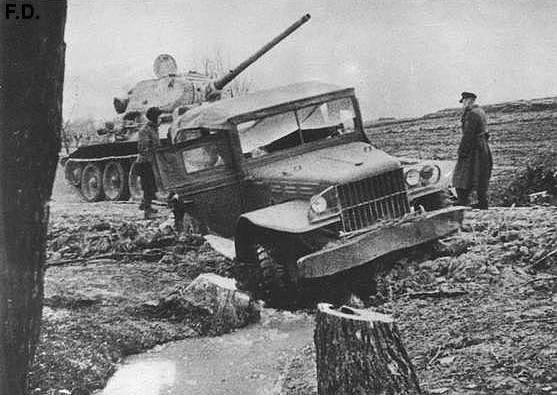
Cars "Dodge" are present in a variety of front-line images
After some time, amateur photos of the military period appeared on the Internet, where you could make out all the same staff vehicles. It became clear that the history of the Soviet “Dodge” was clearly not limited to creating a prototype - probably a small batch was still made (two or three dozen units), otherwise there would be at least some mention of these cars (if not in the automotive industry) then in the affairs of military archives). On the other hand, the design works of GAZ and VMS automobile plants in 1941 – 1945 have not been studied by historians enough. Every now and then new data about various small-scale special vehicles on the truck chassis, about which almost nothing is known to this day, emerge. But one thing is trucks, and quite another - cars.
A copy of the factory drawing "Facing the body of the headquarters machine on the chassis" Dodge ". The document is dated September 1943.
In 2014, the “Automotive Archival Fund” discovered a miraculously preserved factory set of drawings for this VMS (documents dated 1943 year). Now the design features of the phaeton are known. The discovery indirectly confirmed the seriality of these cars, because the prototypes of cars had never made a complete set of drawings. Finally, in the spring of 2016, the longstanding, painstaking search for an answer was crowned with success. In the archives of the city of Moscow, the author of this article found reports on the activities of each ZIS workshop for 1942 – 1944 years. It was there that the body history report summarized the history of this car. In the same archive, in the orders of the plant director, we managed to find several more important documents on this topic. It is time to write in detail about this car.
"General" machine
Fast forward to the beginning of 1942 of the year. By that time, the re-evacuation of the equipment was finally completed at the plant. Stalin, and the Soviet government announced the resumption of automobile production. However, the automotive industry on the ZIS was able to recover only by mid-summer. First of all, the Studebaker heavy trucks, as well as the already mentioned Dodge WC-51 / 52, began to arrive at the factory for assembly. The basis of its own production was a simplified three-ton truck ZIS-5В. As for new developments, Muscovites were able in a short time to start producing a semi-tracked ZIS-42 vehicle based on the same ZIS-5В. The body shop was also actively working - there began the serial production of sanitary bodies ZIS-44 on the chassis ZIS-5 and Studebaker.
In 1943, work was added to body makers in June - a special order was received by the General Automobile Directorate of the Red Army (GAUKA) to manufacture twenty open bodies for the Dodge 3 / 4 chassis in June. These cars were intended for higher commanders of the Red Army. Despite the acute shortage of resources, the plant manager Likhachev immediately takes on this very honorable, albeit private order. By urgent order of the director, the designers began to develop and create a full-fledged staff car on an all-wheel drive American chassis, assembled here on the ZIS. Already 30 June was approved a large-scale layout, and it began to tapping the first body.
Photos of the car with the body of the Stalin Automobile Plant. The car belongs to the second industrial series, with a spare wheel installed at the rear, September 1943
Why did the army need such a car? Do not forget that the Soviet car industry stopped producing the much-needed staff car, barely starting in the 1941 year. We are talking about 4 × 4 sedans GAZ-61 based on the famous "Emka", the number of which has not exceeded two hundred. By 1943, the niche of this class of cars was empty, while the war mercilessly killed Soviet equipment.
Instead of GAZ-61, Gorky began to produce another model, GAZ-64 - a car with the same purpose as the WC-51, but with a completely different weight category. The Soviet jeep, and along with it the American Willys, were designed to tow small 45-mm anti-tank guns, but were more often used as commander vehicles. The car could carry a 3 – 4 person or a load in 250 kg, but it was not necessary to talk about any comfort or roominess in such cars. The generals, on the other hand, traveled around the cities on what - there were plenty of ZIS-101 limousines on army vehicles; there were a lot of luxury European cars. At the same time, vehicles with four-wheel drive and high ground clearance were required to transport "high ranks" along front-line roads and off-road.
The staff versions of the Dodge were well-suited for this purpose, but in the year 1943 were not supplied to the USSR. By the way, since the beginning of the war, the German automotive industry in abundance provided its army with heavy cars. Staff cars produced and British, French, Italian automakers. But in the USSR such a model was not put on development, obviously, believing that it was not up to it. Since there were never any cars with such bodies in terms of ZIS works, the researchers did not know anything about them for seventy years. The reason for this was that they did not appear in the orders of the State Defense Committee and, accordingly, did not fall into the commodity edition of 1943 of the year.
We say "Dodge", we mean ZIS
Body ZIS was developed from scratch, without regard to any foreign counterparts. The place of the usual cargo platform was taken up by a massive passenger seat, on the sides of which there were wide (17 cm) armrests. Light front-row seats remained native, "Dodge". It would seem that the car had to be five-seat - this is indirectly confirmed by the photos, and on the drawings of a not-so-large cabin there is a “hint” of only one passenger seat. In fact, everything was more complicated, and the car could be seven- and even eight-seater. Most likely, many copies had as many as three rows of seats - the presence of the middle row is directly indicated by the remaining technical task 1944 of the year, which is given at the end of the article.
As for passenger capacity, it has yet to be clarified. At first, the phaeton had three entrance doors, in place of the fourth (driver's) spare tire. To close the car in bad weather, it was necessary to manually lift the awning, while two of the three racks were the fixed part of the accordion awning. Side openings were closed with canvas hangings with transparent plastic windows. There was also a small window in the back of the tent. Of the traditional staff vehicle configuration in the car, there was only a shelf to accommodate a walkie-talkie. Behind the car, a small trunk was adapted, in fact - a case for placing portfolios and documents 13 wide, see. The car did not receive its own designation and was called the “Dodge headquarters vehicle with a ZIS body”.
The car of the commander of 2-th separate Czechoslovak airborne brigade of Colonel V. Prikryl. Poland, autumn 1944 of the year
In August, the first prototype was assembled 1943, in the same month they produced the first batch of twenty cars. The Soviet-American hybrid was very successful, and in September, GAUKA ordered another 55 car body, but with some changes. The need was identified to simplify the assembly of the frame, to replace the hard wood with a soft one, and the details of the awning were changed. Fundamental changes in the body of the Dodge became the transfer of the reserve from the left side to the rear and, accordingly, the appearance on the left side of the door (at the location of the reserve). On some machines, the spare wheel was stored right in the back case.
The second, the September party was made in the number of 70 units, ten of which were collected by a special task. They differed from the standard ones by improved interior and exterior trim; the interior was upholstered in leather instead of leatherette, including pasting panels of the sides and doors; decorative parts were chrome-plated, instead of the usual green enamel, the bodies themselves painted better nitro-paint. In October, followed by a third, last order. As a result, before the end of the year, 145 commander vehicles were assembled with the backlog of parts on 200 bodies. In the new 1944, the ZIS body shop switched to other works.
Perhaps, only one important question remains unsolved - for whom exactly were these cars ordered? Unfortunately, documentary answers to it cannot be found yet, but by indirect indications one can confidently assume that ten cars, made with particularly careful trimming, were intended for front commanders — that is, Soviet marshals (there were about ten in June 1943) . Judging by the distribution of cars (according to the lists of the GABTU), about 10% of cars were always left in reserve, one car had to get into the garage of the Chief of the General Staff, a few - into the NKVD. Thus, about a hundred of the remaining copies could be distributed among all army commanders.
Marshal of the Soviet Union Ivan Konev. A Dodge 3 / 4 with a VIS body (right in the background) is seen in its tuple. The picture was taken during a visit to liberated Lviv by the commander of the 1 of the Ukrainian Front, August 1944.
The story of the staff "Dodge" was continued a year later, when in August 1944 was returned to the factory for repair and rework of 10 vehicles. Most likely, these were the very "marshal" cars. We give the technical conditions of the alteration - they are interesting in that after the restructuring of the last army signs "weathered out of the cars":
“1. The location of the driver's seat and front folding save on the old place. The middle seat is divided by putting two single seats on the sides with a passage in the middle. Leave the rear triple seat in place (on vehicles with a spare wheel installed in the trunk, the seat can be moved forward). The cushions and backs of all seats are made softer by placing new frames and upholstery with leather. Walls and ceiling upholstered with cloth. Lower door panels upholstered in leather, the rest of the surface painted in the color of the upholstery. Cover the floor of the body with a plush mat. Five bodies are painted black, the other five are gray. All irregularities cladding melt and clean. Reinforced shield, layouts, and other internal parts of the boards (non-chrome-plated) should be painted to the color of the upholstery. Move the interior ceiling light backward, placing it between the middle seat. Remove the outer bracket for the antenna.
2. To chrome: frames of windows onboard, door and wind windows; front and rear buffers; all external and internal handles; protective grille radiator and headlights; headbands and sidelights; rims of overall signals; radiator cap; screw heads and bolts of interior decoration.
3. The spare wheel holder is available in two versions. One holder - with the location inside the trunk behind the rear seat, the second outside the rear of the body on the type of staff cars open.
The plant named after Stalin no longer returned to the Dodge chassis headquarters vehicles. The need for new cars has disappeared, since in the 1944, 127 Dodge WC-53 commander vehicles with a fully closed eight-seater body arrived in the USSR in the Lend-Lease line, approximately the same number of them came to the Red Army and in 1945.
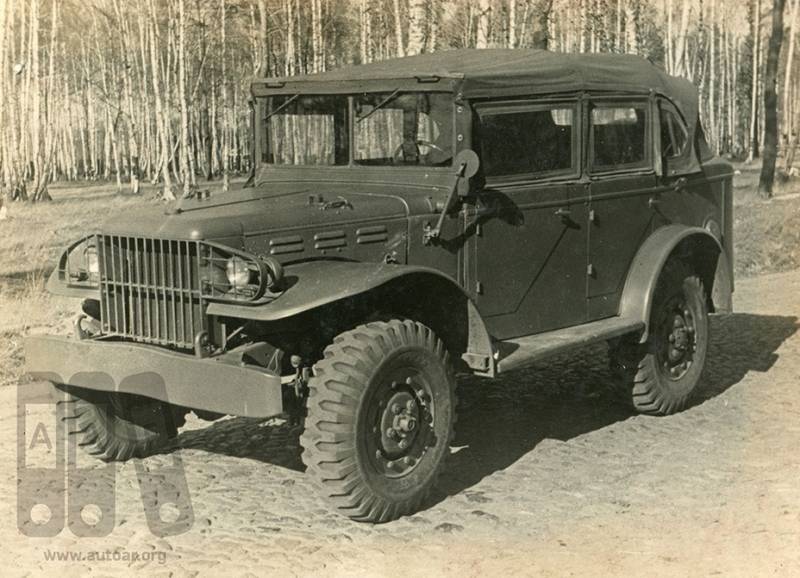
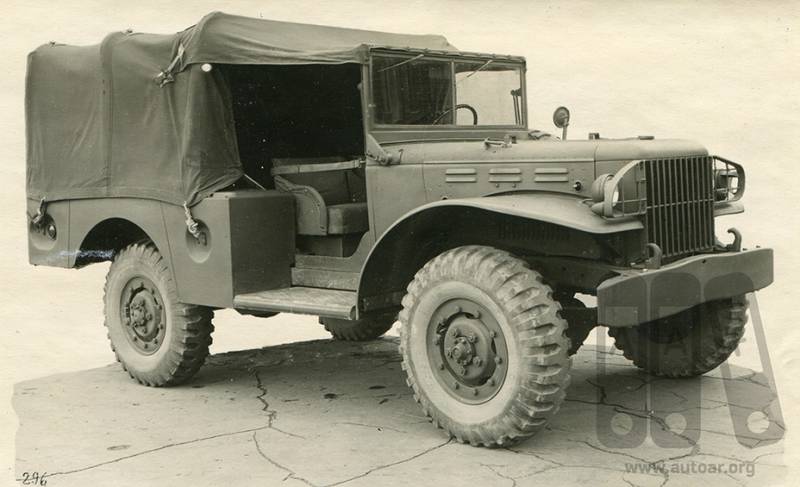
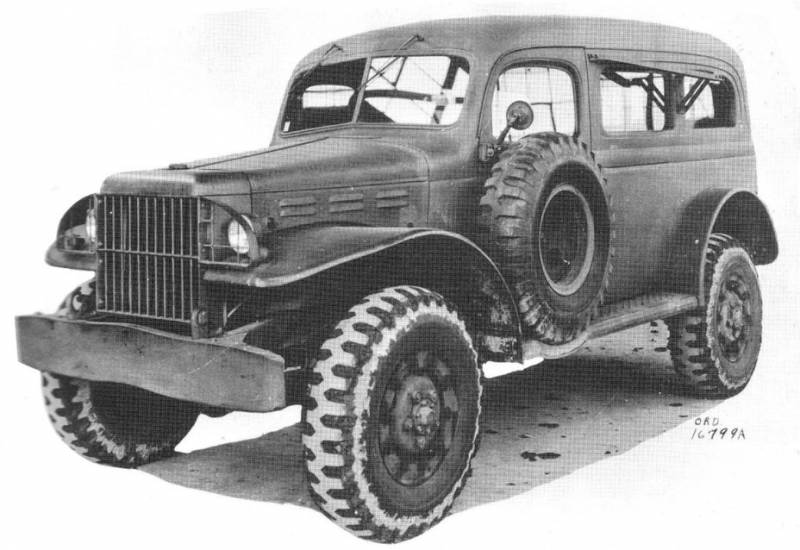
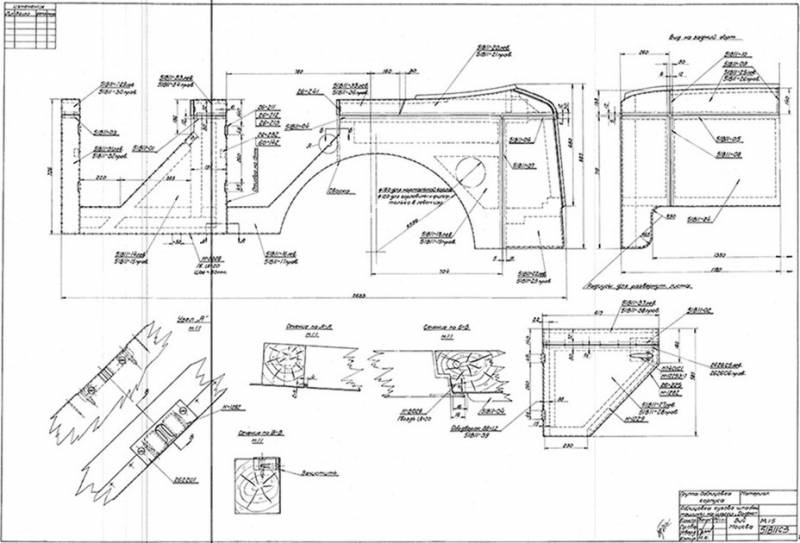
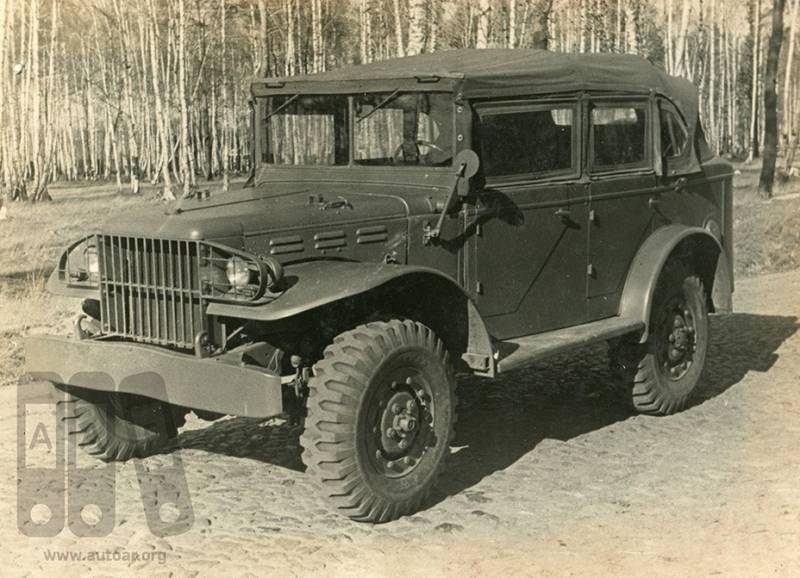
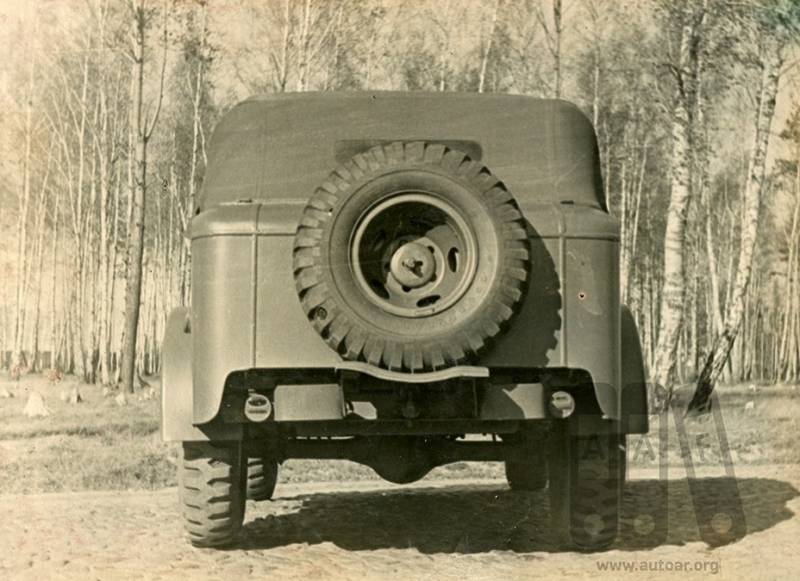
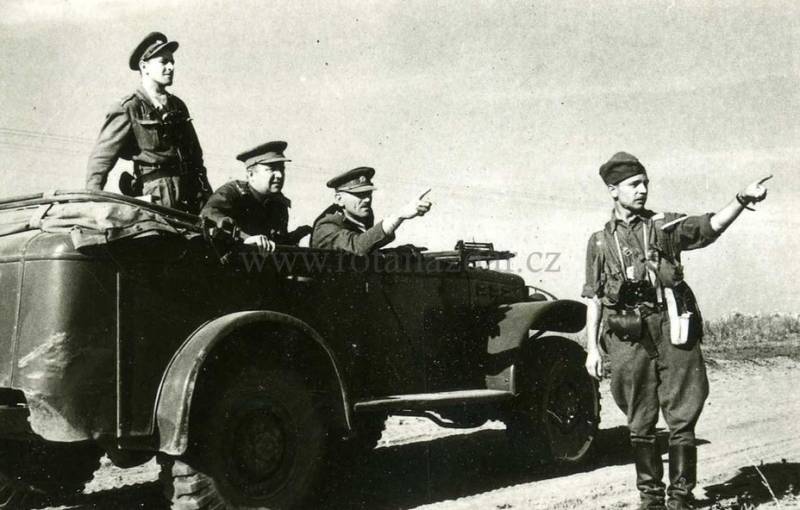
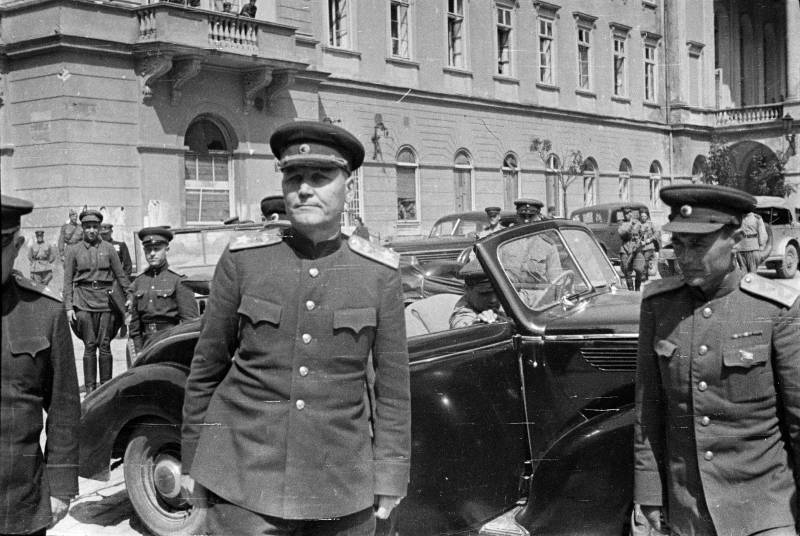
Information